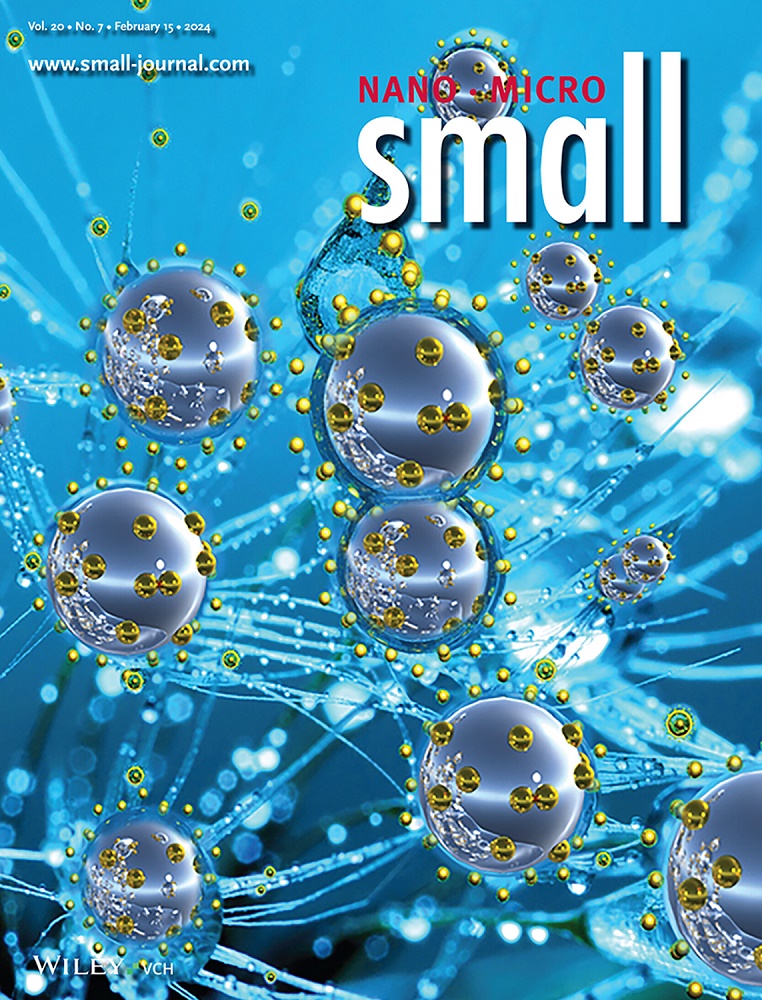设计共价有机框架膜中螯合位点对钪离子的选择性捕获
IF 12.1
2区 材料科学
Q1 CHEMISTRY, MULTIDISCIPLINARY
引用次数: 0
摘要
合理设计吸附剂,使其能够高效、选择性地从复杂基质中捕获目标金属离子,一直是材料科学领域面临的重大挑战。本文证明,在共价有机框架(COFs)中原子水平设计螯合位点是实现选择性金属离子捕获的可行策略。本研究提出了一种综合的方法,将理论预测、结构设计和实验验证相结合,以开发靶向金属离子特异性吸收剂。合成的β -酮胺连接的COFs具有定制的螯合位点,对钪离子(Sc3+)表现出卓越的选择性和增强的吸附能力,Sc3+是一种重要的稀有金属,使用这些定制的COFs制备的Janus膜可以从复杂的多金属离子溶液中选择性分离Sc3+。机理分析揭示了螯合配位和静电相互作用在选择性吸附过程中的关键作用。这项工作代表了利用螯合配位进行金属离子捕获COFs结构设计的重要方法进步,解决了Sc3+回收的具体挑战,并为其他关键金属离子的选择性吸附剂的开发提供了有价值的见解。这些发现有望解决资源恢复和环境修复中长期存在的问题。本文章由计算机程序翻译,如有差异,请以英文原文为准。
Selective Capture of Scandium Ions by Designing Chelation Sites in Covalent Organic Framework Membranes
The rational design of adsorbents capable of efficiently and selectively capturing target metal ions from complex matrices remains a significant challenge in the field of materials science. Herein, it is demonstrated that atomic‐level design of chelation sites within covalent organic frameworks (COFs) is a feasible strategy for achieving selective metal ion capture. This study presents a comprehensive approach that integrates theoretical predictions, structural design, and experimental validation to develop targeted metal ion‐specific absorbents. The synthesized β ‐ketoenamine‐linked COFs, with tailored chelation sites, exhibit exceptional selectivity and enhanced adsorption capacities for scandium ions (Sc3+ ), an important rare metal, and selective separation of Sc3+ from complex multi‐metal ion solutions are realized using Janus membranes prepared from these tailored COFs. Mechanistic analysis reveals the critical roles of chelation coordination and electrostatic interactions in the selective adsorption process. This work represents a significant methodological advancement in utilizing chelating coordination for the structural design of COFs targeting metal ion capture, addressing the specific challenge of Sc3+ recovery and providing valuable insights into the development of selective adsorbents for other critical metal ions. These findings are promising for solving longstanding issues in resource recovery and environmental remediation.
求助全文
通过发布文献求助,成功后即可免费获取论文全文。
去求助
来源期刊

Small
工程技术-材料科学:综合
CiteScore
17.70
自引率
3.80%
发文量
1830
审稿时长
2.1 months
期刊介绍:
Small serves as an exceptional platform for both experimental and theoretical studies in fundamental and applied interdisciplinary research at the nano- and microscale. The journal offers a compelling mix of peer-reviewed Research Articles, Reviews, Perspectives, and Comments.
With a remarkable 2022 Journal Impact Factor of 13.3 (Journal Citation Reports from Clarivate Analytics, 2023), Small remains among the top multidisciplinary journals, covering a wide range of topics at the interface of materials science, chemistry, physics, engineering, medicine, and biology.
Small's readership includes biochemists, biologists, biomedical scientists, chemists, engineers, information technologists, materials scientists, physicists, and theoreticians alike.
 求助内容:
求助内容: 应助结果提醒方式:
应助结果提醒方式:


